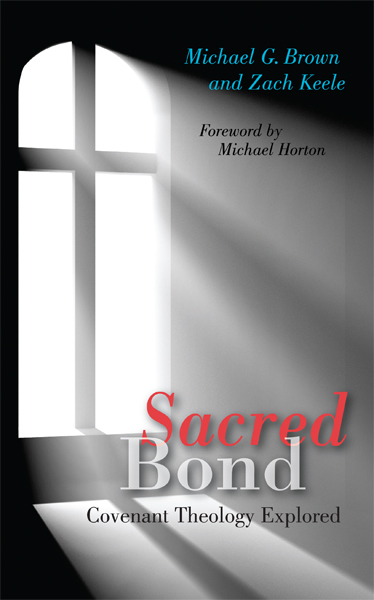
Michael G. Brown and Zach Keele
Reviewed by: L. Charles Jackson
Sacred Bond: Covenant Theology Explored, by Michael G. Brown and Zach Keele. Published by Reformed Fellowship, 2012. Paperback, 168 pages, list price $12.00. Reviewed by OP pastor L. Charles Jackson.
This short book explains the covenant theology of the Scriptures. The authors draw on a series of handy illustrations, which spark the reader's imagination. They make use of helpful charts that reinforce what they have taught.
The authors use a wide variety of sources, but they do so without slowing down the book's pace as an accessible, introductory book. It is full of good information, but not encumbered with overly technical language. The first few chapters are especially helpful to someone who is interested in learning about covenant theology or who has questions about the subject.
Each chapter concludes with questions for further reflection, which makes the study useful in a classroom setting for church or small groups. Overall, the book is helpful as a discussion guide, but this reviewer has a few reservations about giving it to someone who has no knowledge of covenant theology.
One such reservation relates to the confused chapter on what the authors call the "common grace covenant." I say "confused" because they refer to it sometimes as the covenant with Noah and at other times as the common grace covenant. Also, although they present a chart on p. 58 that includes the covenant with Noah as part of the covenant of grace, on p. 74 they refer to the covenant with Noah as a "non-redemptive covenant." This is a tricky area, and even Geerhardus Vos expresses the tension inherent to this period of redemption (Biblical Theology, p. 45).
Furthermore, the chapter on the covenant with Noah was less than half as long as the other chapters, and far less reflective. It feels as if there is a desire to divide God's rule over creation into categories that reflect some of the recent developments of what is called two kingdoms theology. This leaves the reader wondering if the covenant with Noah is redemptive (as in the Westminster Confession of Faith, 7.5–6).
Also troubling were the authors' arguments for something of a "republication" understanding of the covenant with Moses. The reader is left wondering whether all the biblical covenants are administrations of the covenant of grace and thus fundamentally gracious (as in WCF 7.5) or whether they are not all gracious (as the authors seem to indicate at times). This criticism does not question the authors' orthodoxy on this point—just their lack of clarity. They are at variance with the WCF at points, but, as they point out, there have been many Reformed thinkers whose ideas are reflected in their study.
As an attempt to bring consensus among seventeenth-century Reformed theologians, the WCF provides a confessional framework for understanding the gracious, redemptive, and perpetual character of all the covenants included in the covenant of grace—thus, essential continuity and grace. This, however, does not eliminate the complexity of reconciling issues related to eschatology, typology, and other important questions surrounding each epoch of redemptive history. To this extent, Brown and Keele do a great job of continuing a conversation on this important topic, and for that reason I recommend getting a copy of their book.
April 13, 2025
Suffering: God’s Purpose in Our Pain
April 06, 2025
Sunday Matters: 52 Devotionals to Prepare Your Heart for Church
March 30, 2025
On the Trail with a Missionary
March 23, 2025
Midnight Mercies: Walking with God Through Depression in Motherhood
March 16, 2025
March 09, 2025
Zwingli the Pastor: A Life in Conflict
March 02, 2025
© 2025 The Orthodox Presbyterian Church